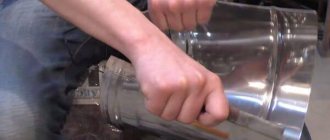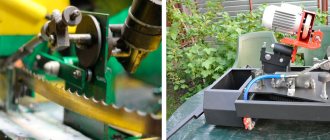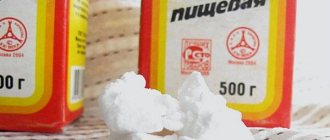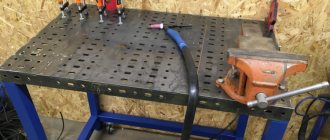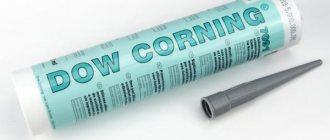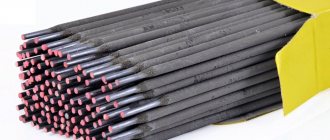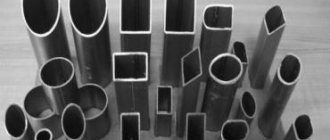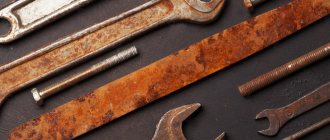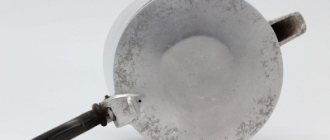Plumbing fixtures, wheel rims and other chrome-plated products are cleaned with home remedies or special pastes designed to combat metal oxides.
To achieve the desired effect and not damage the coating, you must follow the instructions and remember the important nuances of cleaning.
In this article we will tell you how you can remove rust from chrome surfaces without damaging them.
Traditional recipes for use at home
Available solutions and materials that are found in almost any home can help remove rust stains quickly and efficiently. These products do not require large financial expenditures, and their use is safe for human health and the item itself.
To speed up and facilitate the removal of rusty deposits, before using any recipe, the damaged surface must be cleaned of dirt and dust with a detergent and rinsed with water.
Vinegar
Used as a reagent:
- dining room,
- wine,
- low concentration apple cider vinegar (6-9%).
It is not recommended to use concentrated vinegar essence for work due to its excessive aggressiveness.
Acetic acid is poured into a container and the rusty part is placed in it . If the size of the product does not allow using this method, wipe the damaged area with a cloth soaked in vinegar and cover the surface with it.
For protruding parts of an object (for example, a faucet spout), it is convenient to use a different technique. Vinegar is poured into a plastic bag and tied so that the rusty area is immersed in the reagent.
The exposure time in the vinegar solution depends on the amount of rust.
The thicker the layer, the more time is allowed for the reaction .
On average it ranges from three to eight hours. After removing the vinegar application, the product is thoroughly wiped with a sponge, removing any remaining plaque and washed. Work with vinegar should be carried out with open windows and ventilation turned on, since the vapors of this substance irritate the human respiratory tract.
How to clean with citric acid?
The action of this reagent is similar to vinegar . Citric acid or products containing it (natural lemon juice) help remove rust easily and effectively.
The acid reacts with metal oxides and hydroxides, converting them into salts.
Add a little water to the citric acid powder to make a paste . It is applied in a thick layer to the rusty areas and left for several hours. After this, wipe the surface with a soft cloth.
If the rust layer was thick and rusty traces remained after treatment, repeat the cleaning procedure.
Coca Cola
Drinks containing organic acids (orthophosphoric, citric) are also suitable for removing rusty deposits. Instead of Coca-Cola, you can use analogues:
- Fanta,
- Pepsi,
- Sprite.
The method is considered effective, simple and safe.
The method of using Coca-Cola depends on the area and location of the rust. Small items are dipped into a container filled with a drink. Leave for several hours and then rinse under running water.
Fixed parts are covered with a napkin heavily soaked in Coca-Cola . It is also possible to receive it with a plastic bag, which is used as a hanging container.
The exposure time in the cleaning liquid depends on the thickness of the rusty deposit. With a minimum layer, 2-3 hours is enough. For deeper damage, it is necessary to extend the exposure time to 5-8 hours.
During cleaning, you should not allow the napkin applied to the surface to dry out, as this will delay the process and will not allow you to achieve the effect. Read more about removing rust with Coca-Cola here.
Aluminium foil
This method allows you to effectively clean products from oxides. Foil is a soft material, so it is gentle on the hard chrome plating, without scratching it and at the same time removing rust particles.
To work, cut several small pieces of aluminum foil . It is enough to cut strips of 7-10 cm from the roll.
The damaged surface is moistened with water. Make a voluminous ball from foil and rub it on the rusty area without strong pressure until it shines.
If necessary, take a new strip of foil, re-wet the product with water and repeat cleaning . After completing the procedure, wash off the brown mass from the coating and wash the chrome surface with water.
How to remove with toothpaste?
To combat rust, use regular tooth powder or paste. These products have a mild abrasive effect and delicately remove rusty deposits, so it is quite possible to achieve a positive result.
However, using toothpaste requires some physical effort, since cleansing is achieved through mechanical action.
Apply a small amount of toothpaste or powder to a flannel cloth or foam sponge . In the latter case, the sponge is first slightly moistened with water. Rub the area with rust until the rust stain disappears.
If necessary, during the cleaning process, add a new portion of the product and continue cleaning. After the procedure, the dry residue is removed with a brush or napkin. The product is washed and wiped dry.
Caring for chrome products
As you know, a problem is easier to prevent than to solve. To prevent rust from settling on chrome-plated items, you must carefully follow the rules for caring for them:
- When washing, use only warm water and mild soap or other gentle products;
- do not turn on the water under high pressure;
- immediately after washing, wipe the products dry with a cloth;
- do not use abrasive compounds so that the base does not become covered with a network of small scratches;
- avoid sudden temperature changes and high humidity;
- in winter, use special protective sprays for outdoor products and car bodies.
Effective and high-quality protection, as well as cleaning chrome bases from rust, is quite possible. To do this, you just need to follow simple tips and avoid mistakes in caring for “capricious” products.
Special products for cleaning chrome parts
When choosing a chemical intended for rust removal, you must carefully read the accompanying information .
The liquid or paste must be approved for use on chrome plating.
It also matters:
- expiration date of the product,
- its cost,
- Ease of use,
- harmless to human health.
WD-40
The drug was developed by an American company of the same name. WD-40 is an aerosol used in everyday life and in auto repair shops.
The product is versatile and can be used to remove marks:
- corrosion,
- glue,
- fat,
- bitumen,
- soot,
- mud.
WD-40 does not leave oily or sticky stains and forms a water-repellent layer on the surface of parts.
The product includes:
- White Spirit,
- carbon dioxide,
- mineral oil,
- inert additives.
To clean rust, the product is sprayed onto the surface to be cleaned, left for a short time and wiped with a napkin. A 200 ml bottle can be bought for 200-300 rubles.
Doctor Wax
The product from a well-known American brand is available in the form of a polishing paste . It is suitable for cleaning not only chrome surfaces, but also coatings made of:
- bronze,
- aluminum,
- gold,
- silver,
- become.
There are no abrasive or aggressive substances in the composition; the polishing properties are based on vegetable wax. Polish removes scratches and traces of rust. It is in demand in workshops and at home.
Doctor Wax is applied to surfaces with rust. After some time, when the paste dries and turns into a matte coating, the coating is polished with a soft cloth. The cost of a can weighing 0.18 kg is on average 350 rubles. A 300 ml bottle is estimated at 380-400 rubles.
Metal Polish
The polish was developed by the German company Autosol. The product has a creamy consistency. Metal Polish is used for cleaning and polishing:
- dishes,
- plumbers,
- car body,
- industrial equipment.
May be used for:
- chromium,
- brass,
- copper,
- nickel,
- become.
To clean the surface, Metal Polish paste is applied to the area with rust and, using a cloth, polished in a circular motion until shiny. Then remove any remaining product and wipe the coating with a clean cloth.
The average price for a tube of paste with a volume of 0.75 ml is 450 rubles, a large jar with a volume of 0.75 liters costs from 2,700 rubles (all prices are here).
In order to efficiently remove rust stains from chrome plating, you must follow the instructions and follow the safety rules noted.
Removing rust from chrome surfaces of plumbing fixtures and kitchen items
We come across chrome surfaces all the time in our daily lives. Initially, they delight us with their brilliance and radiance in the bathroom and kitchen. Soap scum, mold on plumbing fixtures, dust and dirt in any form play a big role in the loss of the beautiful appearance of such elements. Regular cleaning and maintenance of chrome components is essential to maintaining a clean, shiny appearance. To do this, you can use the following tools:
- Multifunctional cleaning products, as well as glass washing liquids (“Mr. Muscle”, “Help”, “Clin” and others). Clean chrome with a soft cloth.
- Baking soda and carbonated water are natural alternatives to commercial detergents.
- Traces of soap scum from chrome parts of plumbing fixtures can be removed using antistatic wipes or cooking spray.
- To remove soap scum, you can mix baking soda with water, apply it to the surface and leave for a few minutes. After this, wipe the surface with a soft damp cloth.
What can't be used and why?
The shiny chrome finish is sensitive to many aggressive and rough products. Therefore, when choosing a suitable method, it is worth keeping in mind unwanted cleansers.
The list includes:
- Steel wool . It spoils the gloss of the chrome finish and makes it dull.
- Metal scourers . Such sponges can remove rust, but leave marks on the coating.
- Strong acids . Sulfuric, hydrochloric and other acids destroy the protective coating.
Helpful tips for removing rust from chrome surfaces:
- If rust has eaten through the chrome coating, mechanical treatment is necessary. The grit level of the sanding materials is determined by how deeply the parts are damaged by corrosion. In some cases, fine sandpaper is sufficient, in others, coarser grains are needed.
Important! Carefully select the material with which you will apply the cleanser. Sandpaper of any grit is absolutely not suitable for these purposes, as it can cause scratches. Remember that each new scratch is an additional access of oxygen to the metal, it intensifies the rusting process.
- If mechanical friction removes a significant amount of metal, it is necessary to protect it by applying primer to weld seams and other areas.
- The use of acids is possible only if they are immediately removed from the surface of the parts after processing.
- Polish can be used if the damage is shallow. The presence of acid or anhydrous ammonia in the composition of polishes is not allowed.
- To remove rust from chrome surfaces without damaging them, you can use steel wool. For particularly stubborn rust, metal wool can be combined with other cleaning products.
- You can apply a protective layer of chrome polish, rust spray or deep penetrating lubricant like Prolong, NANOPROTECH, Nordtech, etc. Although these products are quite expensive, they are cost effective in the long run because they The wear of surfaces will be significantly reduced, which will save you from expensive rust removal procedures.
- It is best to restore chrome parts damaged by corrosion using specialized compounds that can be purchased at automotive stores.
Recommendations
In order to be 100% satisfied with the result of the work, you must follow the instructions included with each product and remember the additional recommendations:
Before applying a reagent or using mechanical cleaning from a chrome-plated product, it is recommended to wash off the dirt to facilitate contact with rust.- The soak time in the cleanser should be adjusted depending on the extent of the damage. Areas with a thicker layer of rust require a longer treatment period.
- After cleaning, the product must be wiped with a dry cloth. It is not advisable to leave the coating to dry naturally, as unsightly water stains will remain on the glossy surface.
- For additional polishing of chrome, it is useful to use oily substances. Vegetable oils and wax polishes are suitable. They are dripped onto a microfiber cloth and rubbed until the surface shines.
Causes of rusty plaque
The main cause of corrosion on the surface of chrome-plated products is excessive force and mechanical loads. They lead to the appearance of small scratches and cracking of the surface layer of the material. This happens as follows: the metal is covered with chromium, it oxidizes due to the negative influence of oxygen and other organic substances. This is how rust appears.
It is also worth noting that metal household appliances are constantly exposed to the aggressive effects of chemical reagents (soap suds, detergents, dust formations, mold). The feeling of cleanliness and comfort is lost - the coating becomes cloudy and loses its original natural shine.
Getting rid of the most stubborn stains
Sometimes when cleaning chrome-plated plumbing fixtures, you encounter contaminants against which a soapy water solution is completely powerless. A solution to this problem can be a moderately acidic solution of wine vinegar. To obtain it, you should mix wine vinegar and ordinary water in equal proportions. Dip a sponge into this solution and try to wipe off the most stubborn stains. After completing all necessary cleaning procedures, wipe the cleaned areas dry with a cloth.
After this, you should constantly wipe the surface itself, as stains from moisture remain on it. When wiping surfaces on which rust is constantly forming, you should clean it periodically. After finishing cleaning the necessary parts, they should be subjected to a cleaning and polishing procedure using aluminum foil cut into small pieces.
It is the most suitable material for such trips. You should not use an overly hard sponge, which may well leave scratches on the surface being treated.
Source
Using dishwashing liquid
To use it to clean chrome parts, it is necessary to prepare an aqueous solution of detergent. First of all, chrome parts should be cleaned of dirt, greasy substances and stains. The purpose of such an obstacle is to expose existing rust stains. You need to mix the drops like this: take about 10 drops of detergent into a bucket of slightly warm water. The solution should be mixed until a small amount of foam appears, and use a sponge to wipe all necessary surfaces. When performing this process, you should periodically wring out the sponge you are using.
If you need to clean a chrome surface in a hard-to-reach place, you should use a toothbrush, which significantly simplifies the successful completion of this procedure. After you have successfully cleaned the chrome parts sufficiently, you should drain the soapy water, rinse the bucket and fill it with clean water. After this, soak a sponge in it and thoroughly wipe all parts to remove any remaining cleaning solution.
